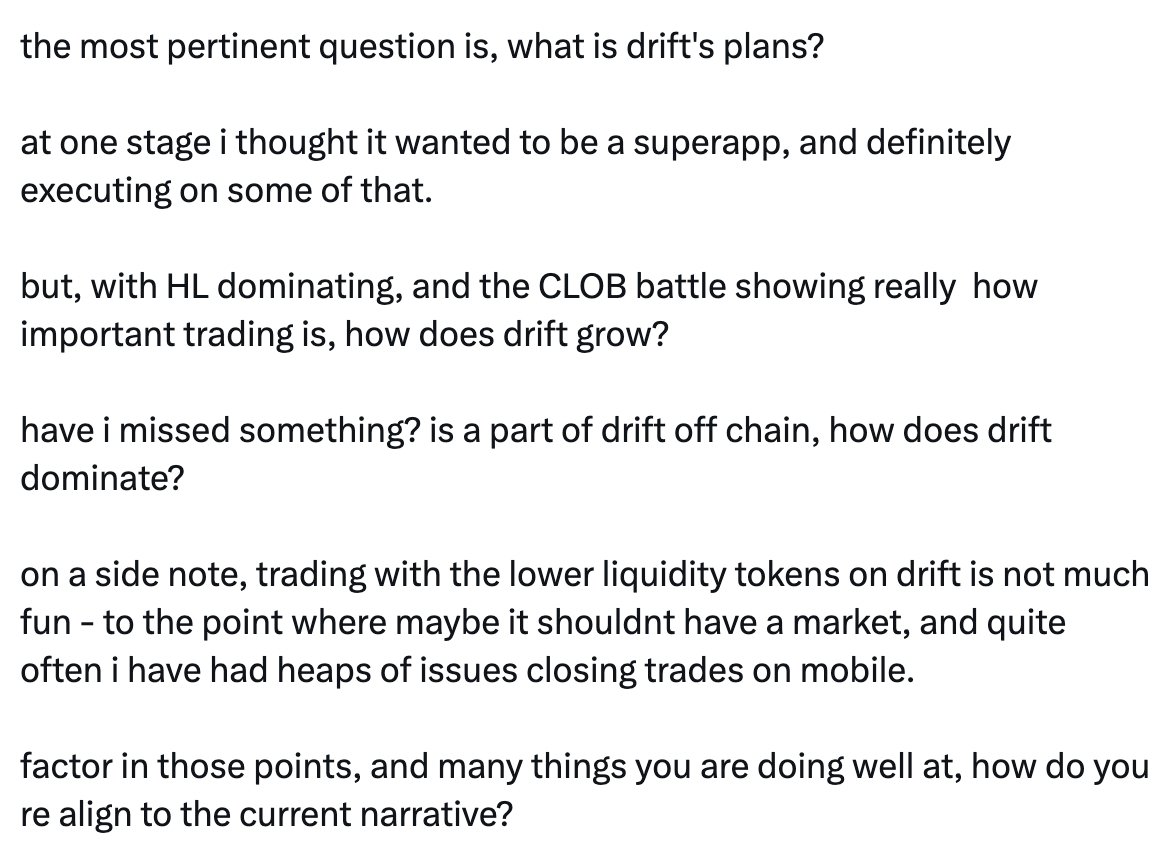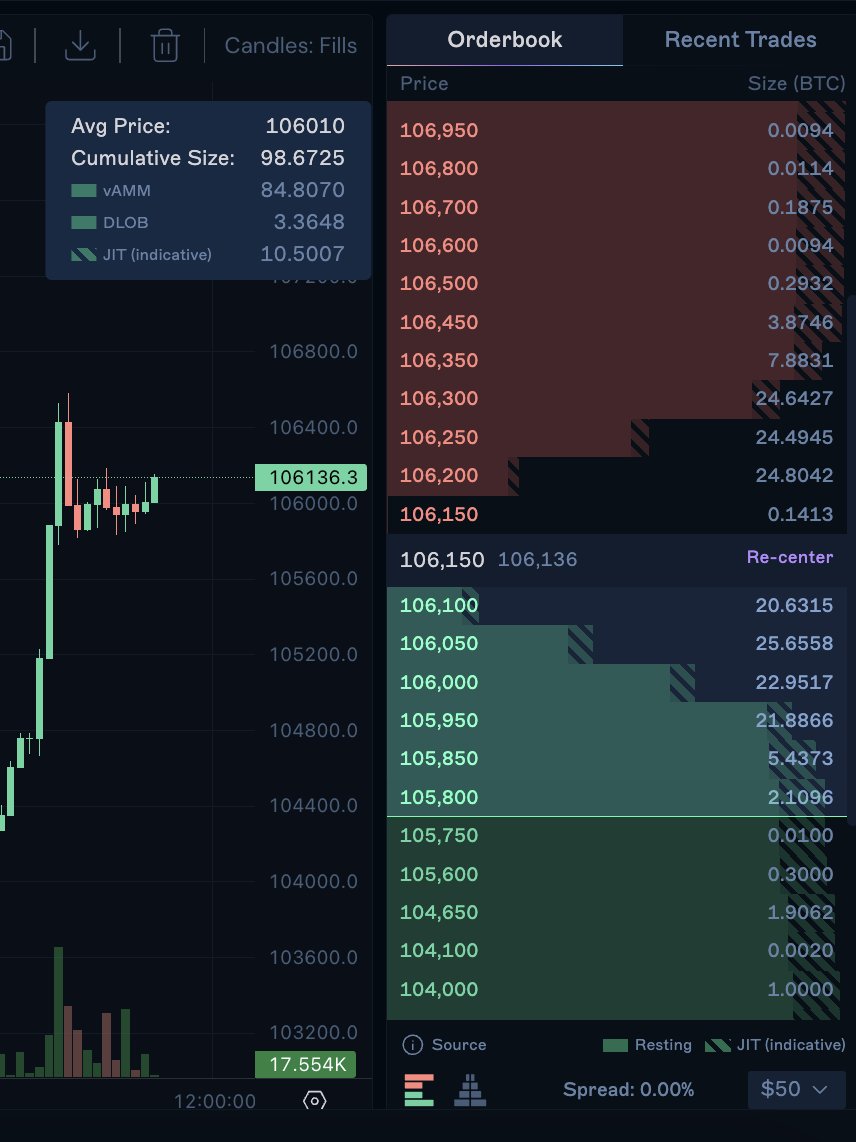"We're cooking with @solana & @jito_sol to deliver something exceptional on the L1."
Interesting anon
Drift's immediate plan is to be the best decentralised derivatives platform. Built on @solana at the L1 level to harness the global atomic state machine. No rollups or isolated environments.
The benefit is asset availability. Drift is the only cross-margin perps DEX and this is only possible because of the L1. Products built on the L1 are directly downstream of asset issuance. You can expect an L1 like Solana to dominate in this area in the coming years.
To date, Drift has $1 billion in TVL across multiple types of collateral over SOL, BTC, ETH and a myriad of Solana tokens that can be natively supported (JITO, JUP, KMNO, DRIFT, CLOUD, etc).
With the rollup debate and CLOB discussions taking place, we've conveniently forgotten composability. My belief is that in the long term, composability is king.
CLOB Debate
CLOBs are a means to an end; whilst there is a lot of merit to the discussion taking place, I would argue that HL's success is due to their liquidity model, rather than the choice of a CLOB. There's been a long history of dead CLOBs and I will happily bet against any newcomer that don't have clear or existing GTM.
Most build some great piping that never get used. So unless your environment is exceptional, it is very difficult to convince users to bridge assets into an isolated environment.
TLDR: Takers like CLOBs since it gives them the last look at the price. Makers hate on-chain CLOBs as they are ripe for the picking.
Drift's Design
Drift is fully on-chain today. No off-chain matching engine or any part of the stack off-chain. Hence, a slightly different design under the hood with a distributed limit orderbook (DLOB) alongside just-in-time liquidity (JIT).
When you build on share blockspace on the L1, extractive activities can take place. Drift cannot re-order, prioritise or slow-down specific transactions that take place on Solana. Trust me, we'd love to give makers priority cancels where we can - but we can't.
This is why JIT was introduced. Unlike CLOBs, JIT allows the maker to have the last look at the price (just-in-time) before electing to fill them. It is a novel mechanism designed to protect makers.
The disadvantage with this model is the inability to show resting liquidity - since there is no "resting" inventory. We have done our best to work with makers to provide indicative liquidity quotes but I understand that it isn't the same as seeing thick quotes on the orderbook.
We are working on some big updates that will be release in a few weeks to continue improving resting liquidity.
The Current Narrative
We're cooking with @solana & @jito_sol to deliver something exceptional on the L1. Stay tuned for some big updates.
The experience on Drift should have improved significantly today so if you haven't tried Drift for a while, give it a shot and let me know how it feels.
If you experience remotely unacceptable slippage, DM me and I'll personally compensate you for it.
h/t @SebMontgomery for asking the question in the first place!


2.93K
4
The content on this page is provided by third parties. Unless otherwise stated, OKX is not the author of the cited article(s) and does not claim any copyright in the materials. The content is provided for informational purposes only and does not represent the views of OKX. It is not intended to be an endorsement of any kind and should not be considered investment advice or a solicitation to buy or sell digital assets. To the extent generative AI is utilized to provide summaries or other information, such AI generated content may be inaccurate or inconsistent. Please read the linked article for more details and information. OKX is not responsible for content hosted on third party sites. Digital asset holdings, including stablecoins and NFTs, involve a high degree of risk and can fluctuate greatly. You should carefully consider whether trading or holding digital assets is suitable for you in light of your financial condition.


